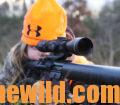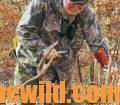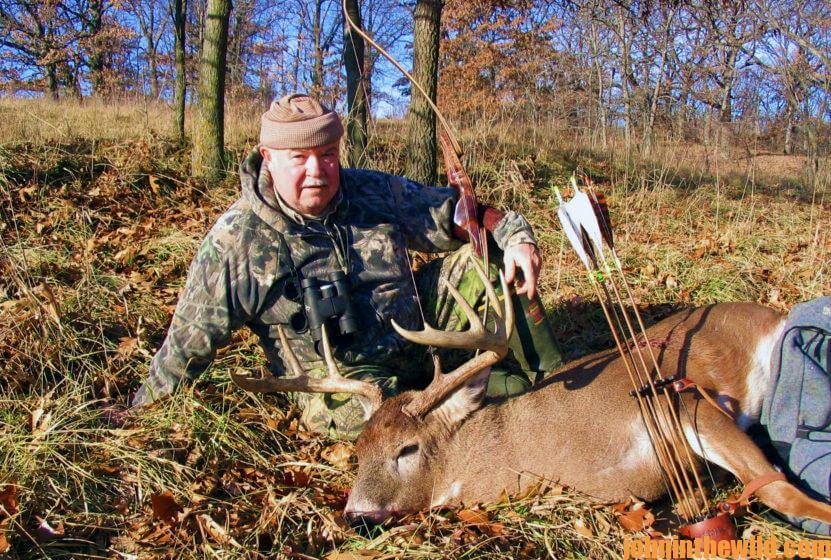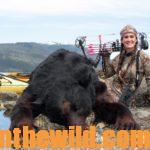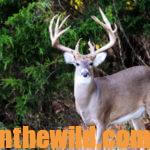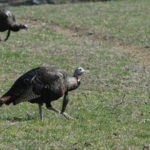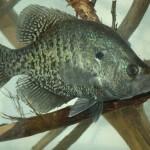Editor’s Note: Two of the nation’s most-legendary deer hunters in recent years are 70+-year-old Gene and Barry Wensel from Iowa. Their webpage is titled Brothers of the Bow http://www.brothersofthebow.com, because they are twin brothers, and they both deer hunt with bows. Gene has written many magazine articles and several books on deer hunting. Barry and Gene were two of the early pioneers who taught deer hunting at seminars and consumer shows all over the country and promoted bowhunting for deer, starting in the 1970s.
* Use Trail Cameras: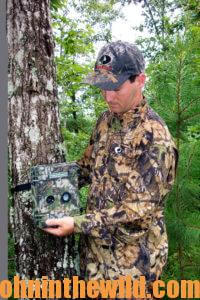
I’m often asked, “How do you find the big bucks that you take?” Often I’ve been watching some of these big bucks for 2-3 years on trail cameras that I’ve put out. I want to know what’s on the menu before I start hunting. If the property you hunt doesn’t have a big buck, there’s a very-good chance you’ll never take a big buck on it. Lots of people are trying to take older-age-class deer on land where deer don’t survive long enough or don’t have enough nutrition to reach those mature classes.
I like to know if there’s a big buck on the property before I hunt it, because it’s easier for me to pass-up a nice buck when I know I have a chance to take a monster buck. I’ll often put out trail cameras as early as April and May. However, generally I don’t put them out until July, and I keep those trail cameras out until the bucks shed their antlers. Then I’ll know what bucks are on the property, and the buck I want to try and take, which shrinks the land I have to hunt. Once I’m convinced I have a big buck on one of the properties I hunt, I try to learn all I can about where that older-age-class buck feeds, beds, waters and travels.
* Hunt Shed Antlers:
I also hunt shed antlers. Often during the rut, mature bucks will cruise through my property that I don’t get trail camera pictures of, or that I don’t see. But if I can find shed antlers of a big buck after the season, I’ll know that buck has come through my land at some time during the year, and that he hasn’t died during the winter.
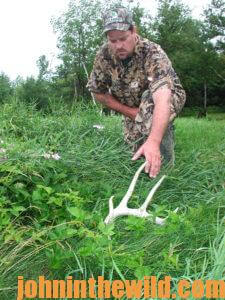 * Identify Best Places to Hunt – CRP Lands, Ads in Newspapers, and Small Plots:
* Identify Best Places to Hunt – CRP Lands, Ads in Newspapers, and Small Plots:
I hunt public lands as well as private lands. I find the farms that I get to hunt by one or two ways. The landowners are friends of mine that I’ve met at church, who have given me permission to hunt on their land, or I’ll lease a portion of that farm. If a friend allows me to hunt his property, then I realize more than likely there are two or three other people that he’s given permission to hunt that same property. I don’t have an exclusive right to hunt there. So, I look for places on those types of private lands that none of the other hunters are hunting. I also lease property too.
When large-field farming replaces patch farming, the people who own or lease a property will farm every bit of that land they possibly can farm. However, even on large farms, there may be a drainage ditch, a little patch of woods, a fencerow dividing two fields or some other type of what I call “out property” – a property that’s outside of the fields. These out properties may be timber, Conservation Reserve Program (CRP) land, drainage ditches and/or grassy areas too wet to farm. Most hunters would look at this type of property and think, “There’s not enough land there for me to hunt.” However, because I only hunted with a bow, a 5-acre corner of a field, a ditch or another type of our property would be just right for me to hunt. If land is leasing for $5 to $20 per acre, and I can pay $25 to $100 for 5-10 acres of woods, grass, hedgerows or places where I can put a tree stand, then I’ve got a good little honey hole where no one else can hunt. The farmer too has made himself money that he wouldn’t have had if I hadn’t leased that land.
In January and February, I also discover places to find big deer by running an ad in weekly newspapers in rural areas. Small-town weeklies are usually read cover-to-cover during January and February, because the farmers already have harvested their crops, and the time is too early to start plowing. I’ll run an ad that says, “Responsible, ethical, experienced bowhunter willing to pay a fair trespass fee to access property to hunt.” Or, I may run an ad that says, “If you have a problem with deer eating your crops, I can be part of the solution. I’m a responsible, ethical, experienced bowhunter willing to pay a fair trespass fee to access property to hunt.” I’ll also put my phone number in the ad. Most of the time farmers from that area where I’ve run the ad will call me. If the  landowner asks me, “What are you willing to pay to hunt my land?” I’ll start asking questions like, “How much land do you have?” “How heavily is the land hunted now?” “What percentage of your land is tillable, and what part’s not tillable?” “What type property adjoins your land?” “Is the land around your property hunted heavily?” After I get a feel about the land from talking to the farmer, I’ll ask, “Can I come and look at your property?” I want to know all I can about the property before I decide to lease it.
landowner asks me, “What are you willing to pay to hunt my land?” I’ll start asking questions like, “How much land do you have?” “How heavily is the land hunted now?” “What percentage of your land is tillable, and what part’s not tillable?” “What type property adjoins your land?” “Is the land around your property hunted heavily?” After I get a feel about the land from talking to the farmer, I’ll ask, “Can I come and look at your property?” I want to know all I can about the property before I decide to lease it.
When I look at the land, I’m searching for those areas that no one else in his right mind wants to lease. Often, you can lease as little as 5 acres. If the 5 acres has a lot of deer sign on it, no one has hunted it, and you put out trail cameras, you’ll probably find the kinds of bucks you want to hunt – as long as the land has deer moving through it going to bed, food, water or a sanctuary where no one can hunt. Also the smaller acreages usually will be very inexpensive to lease. Once again, those smaller acreages that can produce older-age-class bucks are dependent on what kind of deer sign you can identify, and what type of bucks you see on your trail cameras. If a farmer has 500 acres, you may find a few acres that he can’t farm, and no one else wants to lease. Oftentimes those are the places where you can find big bucks. So far, I’ve been talking about agricultural lands, but often you can find pasture land where a rancher has his cattle that includes some small woodlots or thick-cover areas where you can find big bucks that aren’t in the pasture.
To answer your question, “How do you find places to hunt to take big bucks?” I look for areas that have good deer sign, that no one else hunts, that has adjacent property no one else hunts, and that I have trail camera pictures of one or more big bucks passing through that property.
T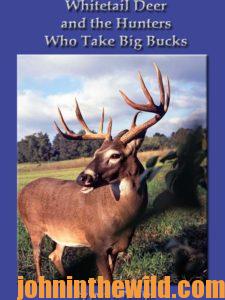 o learn more about hunting deer, check out John E. Phillips’ book, available in Kindle, print versions and Audible, “Whitetail Deer and the Hunters Who Take Big Bucks,” (http://amzn.to/2bYwYOK). You may have to copy and paste this link into your browser. (When you click on this book, notice on the left where Amazon says you can read 10% of this book for free).
o learn more about hunting deer, check out John E. Phillips’ book, available in Kindle, print versions and Audible, “Whitetail Deer and the Hunters Who Take Big Bucks,” (http://amzn.to/2bYwYOK). You may have to copy and paste this link into your browser. (When you click on this book, notice on the left where Amazon says you can read 10% of this book for free).
Tomorrow: Gene Wensel Uses These Factors to Determine When to Hunt a Big Buck

